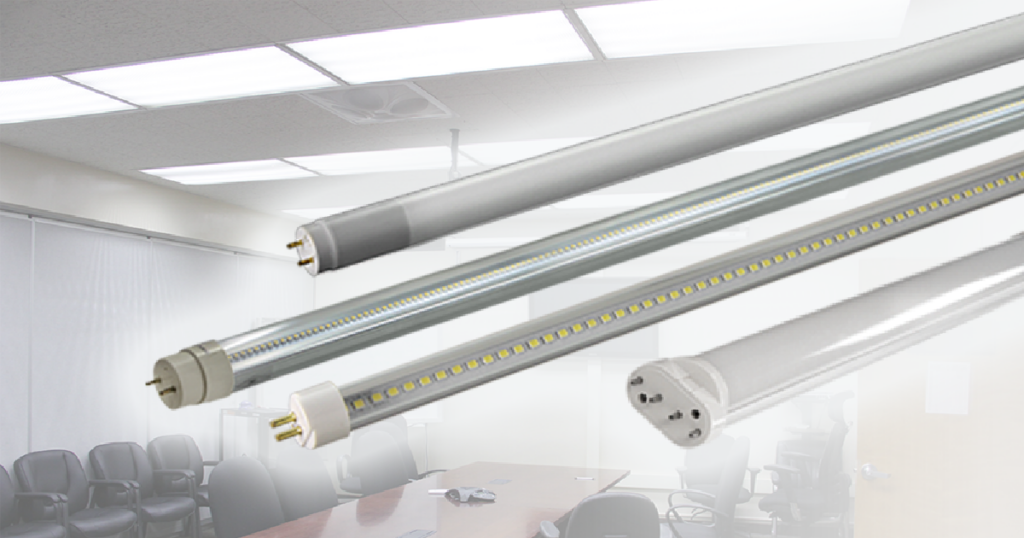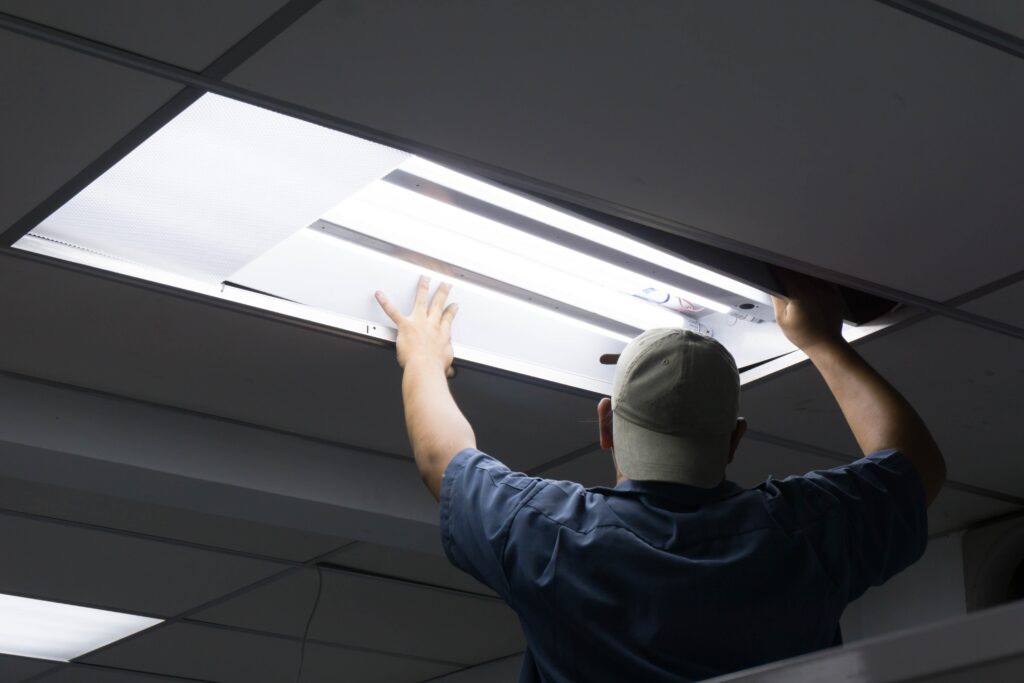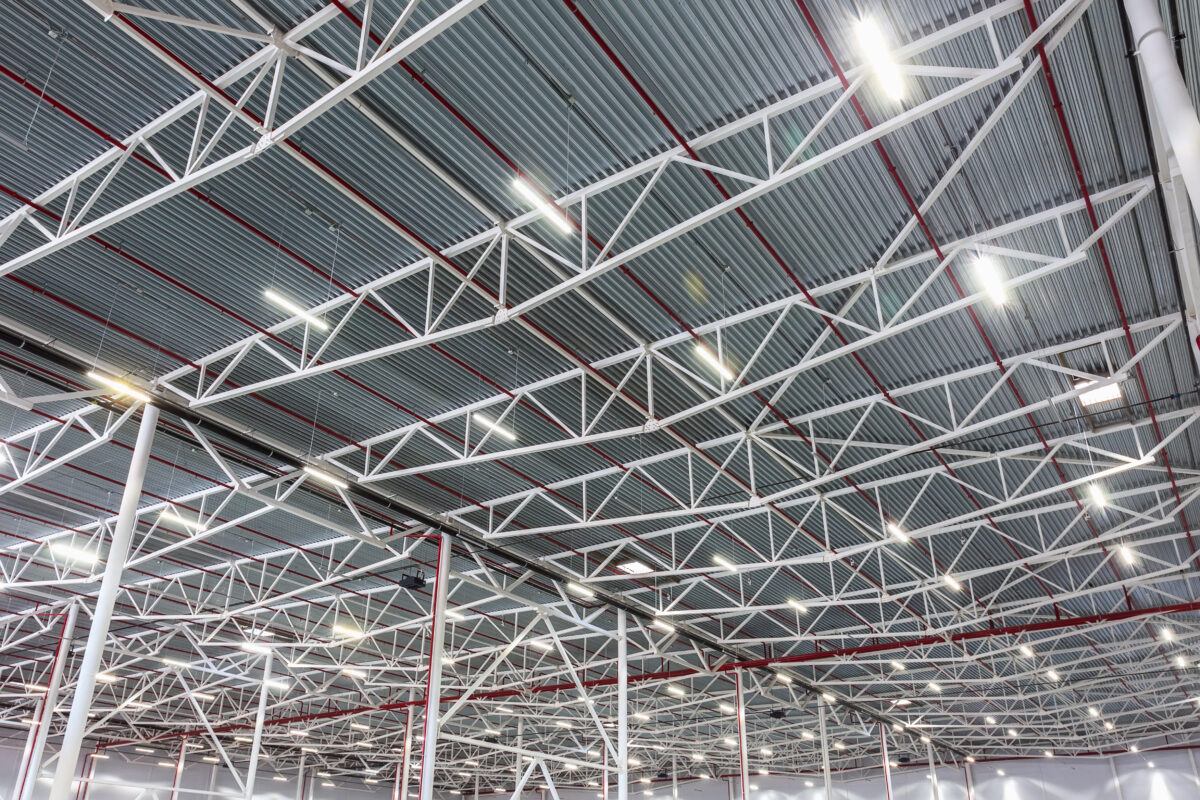LED Tube Lights are one of the most versatile types of lighting. They can be found in common places like offices, hallways, warehouses, schools, hospitals, and parking garages, to the most specific locations such as freezers and cabinets. But did you also know that there are different types of tube lights, and that they vary in size and purpose?
Advantages of LED tube lights over fluorescent/incandescent
Designed to replace the less efficient fluorescent tubes, LED tube lights utilize less energy while still producing bright light with better coloring and temperature control. They also last significantly longer, burn out less frequently, contain zero mercury and often require less maintenance.
Another advantage is that some LED tube lights are dimmable, which makes them adjustable to match the specification of the room. If you want a tube light that’s dimmable, you can forget about it if you have fluorescent.
LED tube lights are the best solution when it comes to updating your old fluorescent fixtures. To accommodate the different applications that ranges from accent lighting to brightening up office areas, manufacturers have developed different types of LED tube lights available in different types and sizes.
Different sizes / shapes of LED tube lights
Choosing the right LED tube lights for your project is easier than you may think. By identifying and choosing the correct type of tube light, you will ensure that your space gets proper lighting. Below, we have listed different types of LED tube lights and their common usage to help you determine what’s right for you!

T5 LED Tube Lights- T5 tube lights are most frequently seen in small applications like under-cabinet lighting, table lamps, grow lights and more. The lamp diameter of T5’s are five eights of an inch, making them slightly shorter and having a significantly smaller diameter than T8 LED tube bulbs. It’s important to note that these two tube lights are not interchangeable.
T8 LED Tube Lights- These are the most common type of tube lights by far. You most often see them in ceiling lights for offices, hallways, warehouses, parking garages, and grocery freezers. T8 LED tube lights have a 1-inch diameter and are commonly 4-feet long, but they are available in all sorts of lengths, including up to 8+ feet. While T8 tube lights are more energy efficient and last longer than T12’s, these two types can be interchanged—as long as they are the same wattage and length, and the ballast is bypassed in the fixture.
T12 LED Tube Lights- T12’s have a variety of sizes similar to T8 tube lights. What makes them different to T8’s is their diameter of 1 ½, making them larger than T8 tube lights. However, most T12 tube lights are being replaced by T8’s because of a few disadvantages. T12’s mostly involve older technology, and most of the magnetic ballasts used in T12’s are hard to find nowadays
U-Bend LED Tube Lights- Unlike the other LED tube lights on the list, U-bend tube lights are known for their unique U-shaped structure. They are mostly used in light boxes, department store lighting, retail stores, and hospitals. New types of LED U-bend tube lights can be a direct retrofit into T8 fluorescents or ballast-free LED fixtures.
The hassle of dealing with ballasts

All fluorescent lights require a ballast in order to function. The ballast helps regulate the lamp’s brightness as it heats up. The disadvantage of this is that ballasts take additional energy to power, and each time they inevitably go out, you’ll need to replace them and reinstall a new one. On the bright side, LED lights don’t require a ballast at all!
Aside from different tube light sizes and shapes, there are also different types of LED tube lights that each offer different functionality with or without a ballast installed in the existing fixture.
Type A (Plug and play)– These are considered as ballast-compatible lamps, and the simplest method for replacing fluorescent tube lights. The majority of T8’s can be used as direct replacement for fluorescent tubes without the need to rewire them.
Type B (Direct)- These are direct wire lights that are not compatible with fluorescent ballasts. These tube lights require the ballast to be disconnected from the installation before placement.
Type C (Hybrid)- This type of tube lights can be used in fixtures with or without a ballast. If the user wishes to eventually get rid of the ballast, it can be bypassed and the same tube light can be used like a direct tube.

